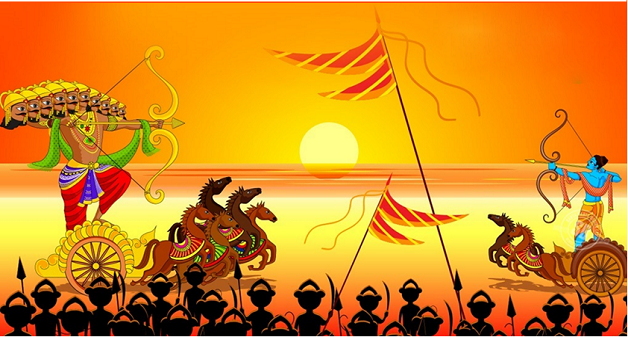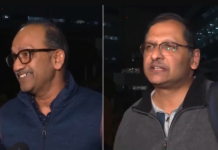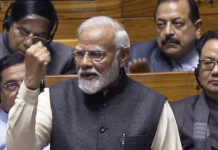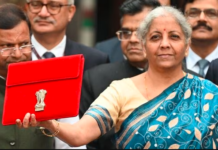Each state has its own religious festival, but the common Indian notion ‘Unity in Diversity’ is reflected during Navratri, Durga Puja and Dussehra celebrations in India. From Sindoor Khela and Durga Ashtami Puja in Kolkata to Garbha-Dandiya in Rajasthan and Gujarat, Golu in South, Bastar Dussehra in mid-India to Ram Lila up north, every region celebrates this festival in a unique way.
While we know why people celebrate Dussehra, the epic tale of Lord Rama ridding the world of Ravan, an embodiment of evil, here is a list of interesting facts, we bet you aren’t familiar with.
#Fact 1: The sun wouldn’t have risen had Rama not defeated Ravana.
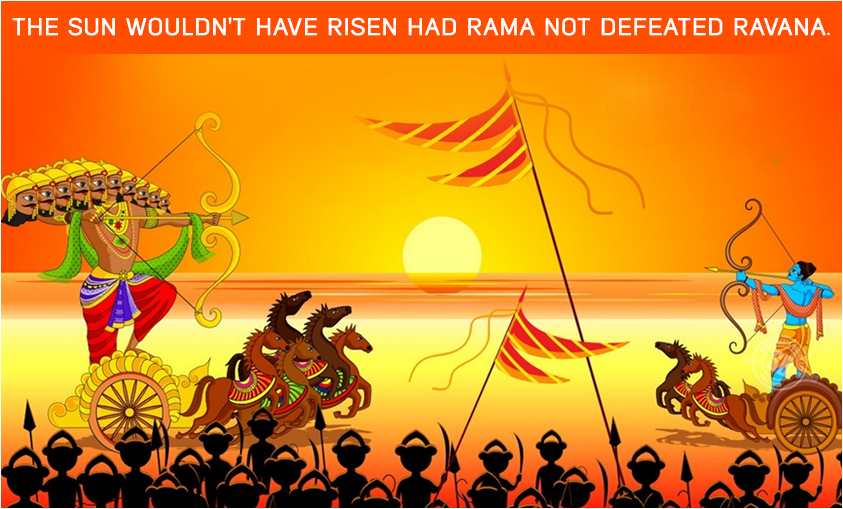
That’s actually true. The word Dussehra comes from Sanskrit words ‘Dasha’ and ‘Hara’ combined, which means ‘defeat of the sun’. According to the legends, had Lord Rama not defeated Demon King Ravana, the sun would not have risen. The entire world would’ve submerged in darkness, dominated by the evil forces of nature. Got reminded of Kilvish’s ‘Andhera Kaayam Rahe’ dialogue, didn’t u?
#Fact 2: Each of the Ravana’s head symbolize different forms of evil that exist in the world.
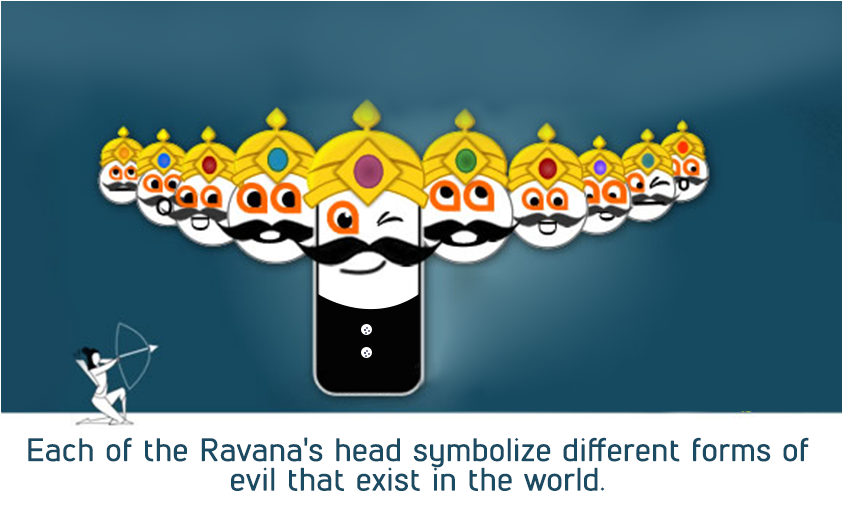
While Ravana may not have all the evil of the world inside him, but we Indians have this interesting way of linking different things and spicing it up isn’t it. As the stories of this festival descended down the generations, people started seeing the ten-headed Ravana as a mega-evil force, with each of his head symbolizing an evil quality namely: anyaya or injustice, amanavta or inhumanity, ahankara or ego, matsara or jealousy, mada or pride, swarth or selfishness, krodha or anger, moha or attachment, kama or lust and lobh or gluttony.
#Fact 3: Bengalis believe Goddess Durga visits her ‘maika’ during navratris and goes back home on Dussehra.
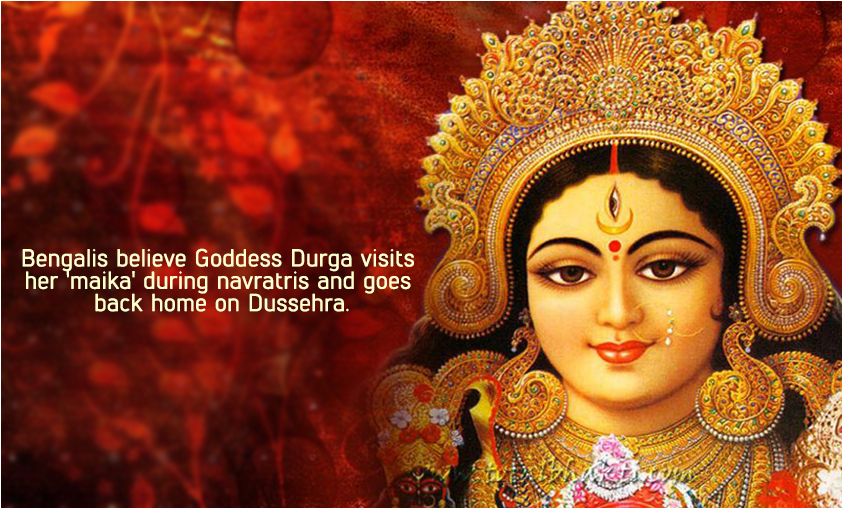
Like typical Indian women, even Goddess Durga was fond of her ‘mayka’ or her maternal home. The tenth day of lunar calendar is celebrated as ‘Vijaydashmi’ in the honour of Goddess Durga, who killed Mahishasur, the buffalo demon king on the tenth day, after continuously battling with him for 9 days and nights. This goddess was a powerful combination of Lord Brahma, Vishnu and Mahesh’s divine power and associated with strength and feminisms.
Bengal myths suggest ever since the battle, Goddess Durga visits her maternal home during navratris every year and returns home on the tenth day of Durga Puja festival. Therefore, loyal devotees inundate her idols in holy waters to bid her farewell.
#Fact 4: Dussehra is a religious holiday in Malaysia and Nepal too.
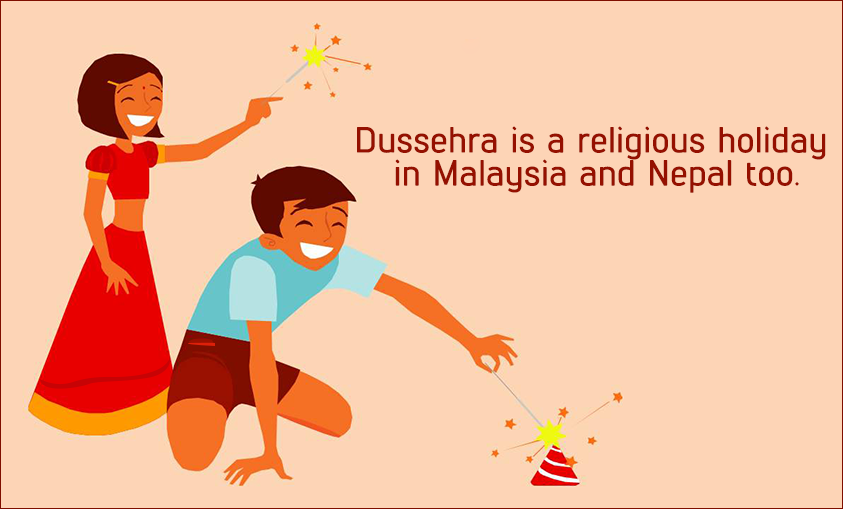
Neighbouring countries like Nepal, Bangladesh and Malaysia celebrate Dussehra too.
Natives from Bangladesh organize celebratory congregations or mandapas and offer prayers at the famous Dhakeshwari temple in Dhaka. They use ‘vermillion’, ‘turmeric’ etc. in their rituals.
Nepalis observe it as ‘Mohani’, a festival based on strengthening family bonds, where elders place ’tilaka’ on the forehead of younger members of the family. People sow ‘Jamara’ seeds on the first day of Navratri and harvest it on the tenth day. A few communities sacrifice animals at temples, cook their meat and distribute it as ‘prasads’.
#Fact 5: The Great Emperor Ashoka converted to Buddhism on Dussehra
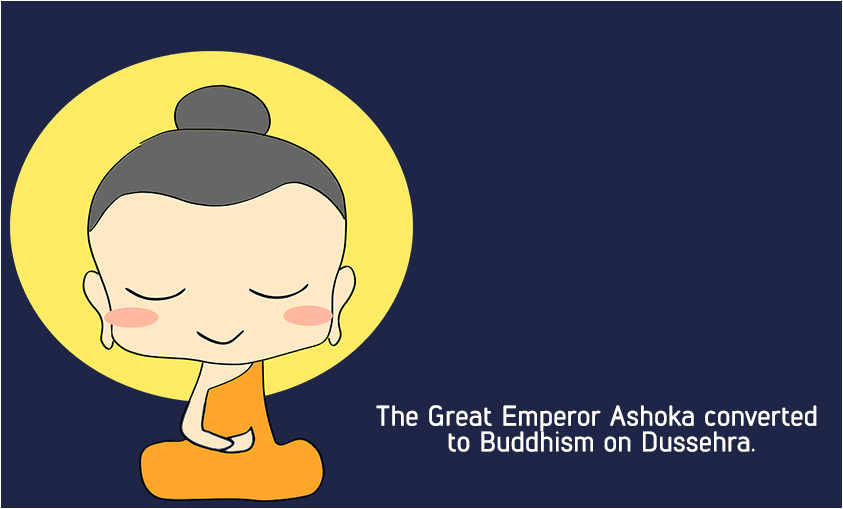
Buddhism and Hinduism are two different festivals, derived from Sanatan Dharma, but there’s no logic or reasoning behind people converting to Buddhism. But history says, Great Emperor Ashoka as well as Dr. Bheem Rao Ambedkar converted to Buddhism on Dussehra, probably to get rid of ‘cruelty, greed and inhumanity’.
#Fact 6: King of Mysore was the first person to celebrate Dussehra in 17th century.
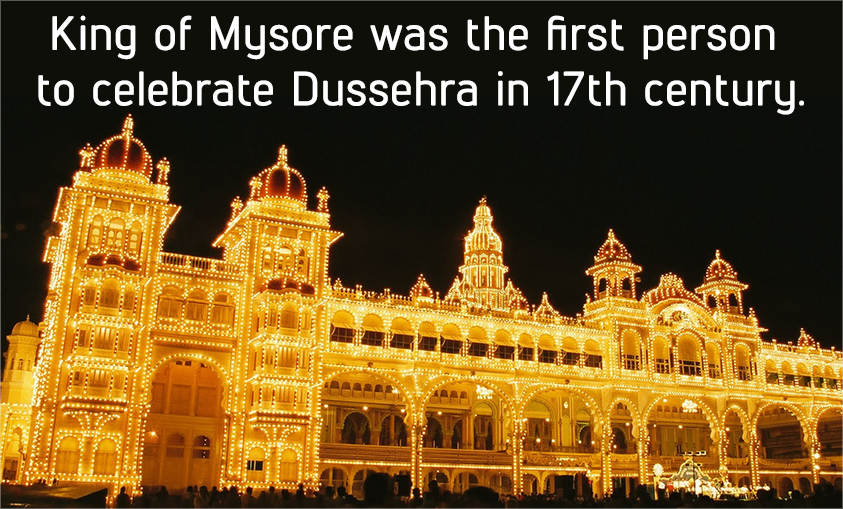
The King surely knew how to party hard during festive season! Mysore was the first Indian city to celebrate Dussehra. It’s the state festival of Karnataka. Natives celebrate it with great grandeur and pomp. The legendary Mysore Palace is decorated with colourful bulbs and adorned with elephants. Folks carry out processions and organize street carnivals to honour Chamundeshwari Devi.
#Fact 7: Many American universities organize a Garbha festival for Indian students enrolled in their campus on this occasion.
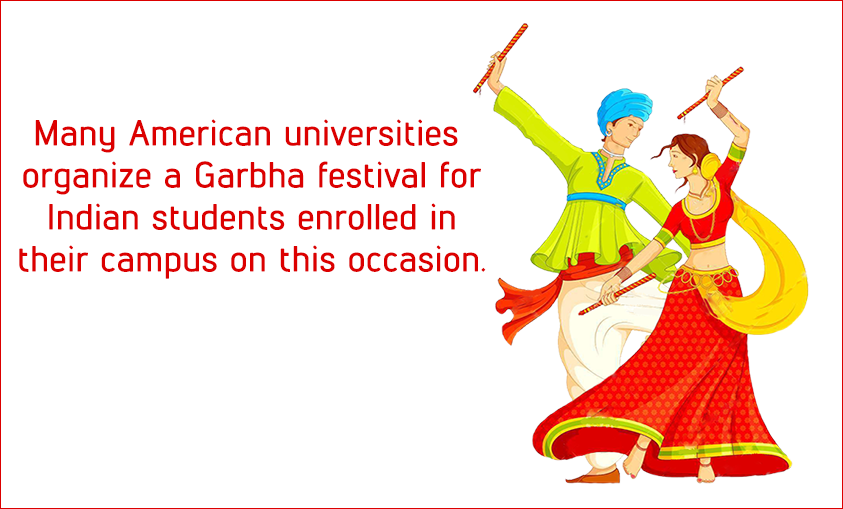
Garbha and Dandiya, the famous dance forms of Gujarat are not only famous in India, but abroad as well. Garbha is all about shoulder and arm strength as ladies swing their hands repeatedly in different ways, moving around in circles. Dandiya is a mild form of wildness. People dance with a pair of decorate sticks, tapping them together at regular intervals.
If you’re a ‘Gujju’ Indian, studying in big American universities, you needn’t miss your home. Many US universities organize this festival in the fall season, mainly October.
#Fact 8: Nepalis and Bengalis observe ‘Sindor Khela’, where they apply vermilion on one another’s forehead in hopes for a prosperous married life.
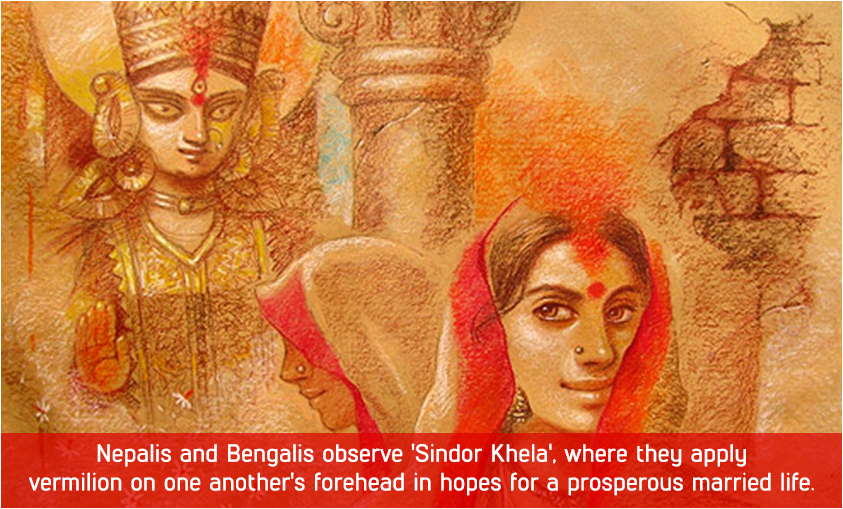
Different states celebrate Dussehra in different ways. The Tamil observe Dussehra as Golu, wherein they create mini museums in their homes. These museums consist of 100 wood/metal idols depicting the Goddess in different postures and activities. Kids in South Indian families celebrate the tenth day as Halloween, as they go ‘trick and treating’ through the neighbourhood.
North Indians stage ‘Ramleela’, that is stage shows depicting different scenes from Ramayana. They burn large statues of Ravana and burst crackers on this occasion. Nepalis and Bengalis celebrate it in a different, colourful way. They sprinkle vermillion on one another, as it is considered an auspicious practice.
#Fact 9: Natives of Kulasekarapattinam in South Tamil Nadu celebrate a fancy ‘Halloween’ style costume party on this day.
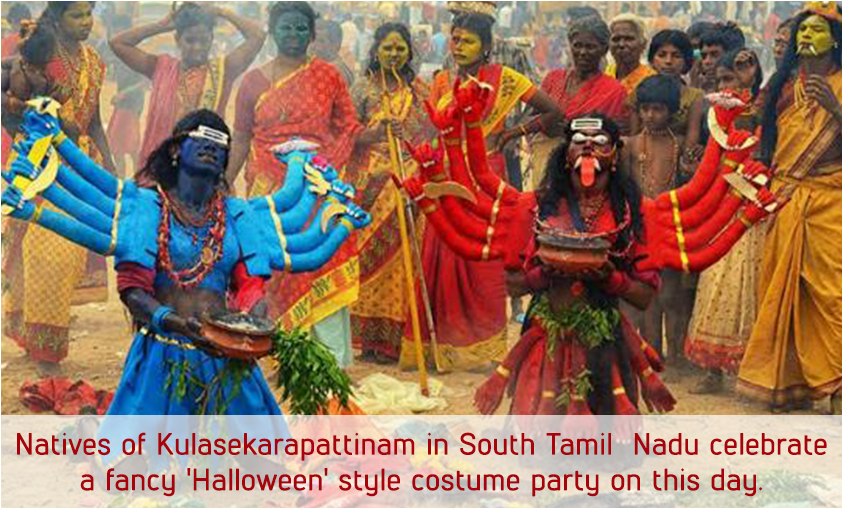
A remote seashore village of Kulsekarapattinam in Tamil Nadu observes Dussehra as a fancy dress street carnival. If you missed the Brazilian carnival this year, make sure to visit their village during Dussehra.
The natives observe ‘complete purity’ for 41 days, wherein they abstain themselves from meat, alcohol, drugs, greed, lie, sex, theft, deceit and other forms of evil. They treat each other with respect, ask for alms during Navratris and practice moral values.
First day of Navratri is observed as a costume carnival where they dress up as their favourite characters and party all night. On the last day of Navratri, they stage a mock battle between demon and goddess, celebrate with good food and fun activities and return to their normal life the next day.
# Fact 10: The festival denotes change in Indian climate from summer to winters.
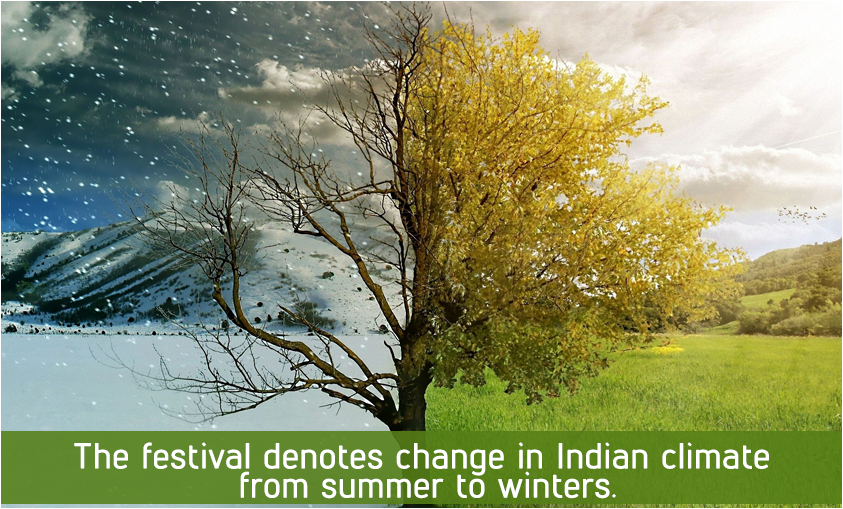
The festival of Dussehra marks the change of season and harvesting of Kharif crops before Diwali. Scorching heat come to an end and pleasant cool winds invade the Indian sub-continent as the climate shifts from Summer to Winter.
So these were 10 interesting facts regarding Dussehra. Hope you had fun reading them!


